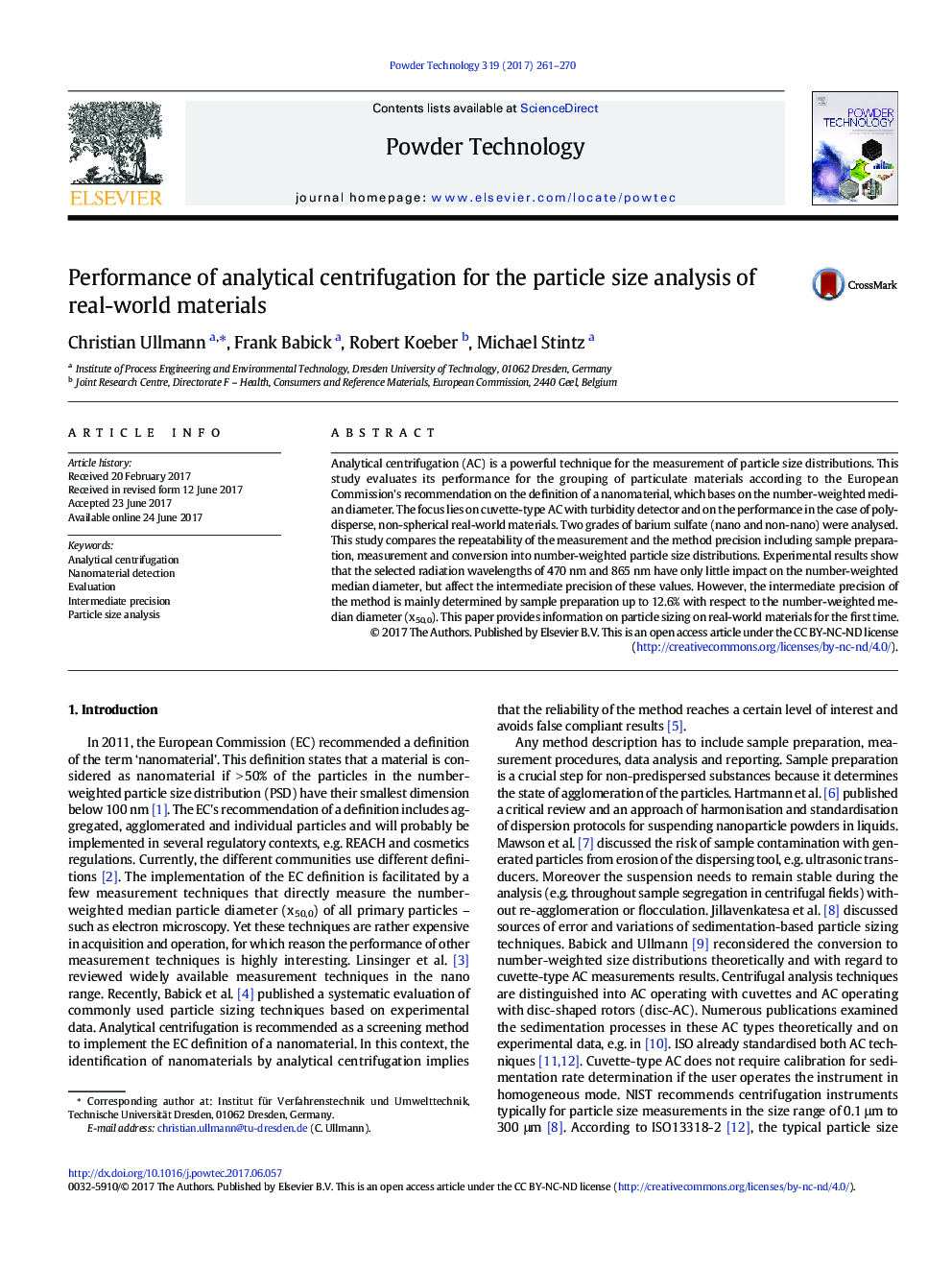| Article ID | Journal | Published Year | Pages | File Type |
|---|---|---|---|---|
| 4914992 | Powder Technology | 2017 | 10 Pages |
â¢Performance examination of analytical centrifugation determining particle sizesâ¢Using real world materials in the nano- and non-nano size rangeâ¢Evaluation of method's intermediate precision according to ISO 5725â¢Comparison of results obtained with radiation of 470 nm and 865 nmâ¢Recommendation on the specific use of analytical centrifugation
Analytical centrifugation (AC) is a powerful technique for the measurement of particle size distributions. This study evaluates its performance for the grouping of particulate materials according to the European Commission's recommendation on the definition of a nanomaterial, which bases on the number-weighted median diameter. The focus lies on cuvette-type AC with turbidity detector and on the performance in the case of polydisperse, non-spherical real-world materials. Two grades of barium sulfate (nano and non-nano) were analysed. This study compares the repeatability of the measurement and the method precision including sample preparation, measurement and conversion into number-weighted particle size distributions. Experimental results show that the selected radiation wavelengths of 470Â nm and 865Â nm have only little impact on the number-weighted median diameter, but affect the intermediate precision of these values. However, the intermediate precision of the method is mainly determined by sample preparation up to 12.6% with respect to the number-weighted median diameter (x50,0). This paper provides information on particle sizing on real-world materials for the first time.
Graphical abstractDownload high-res image (83KB)Download full-size image
